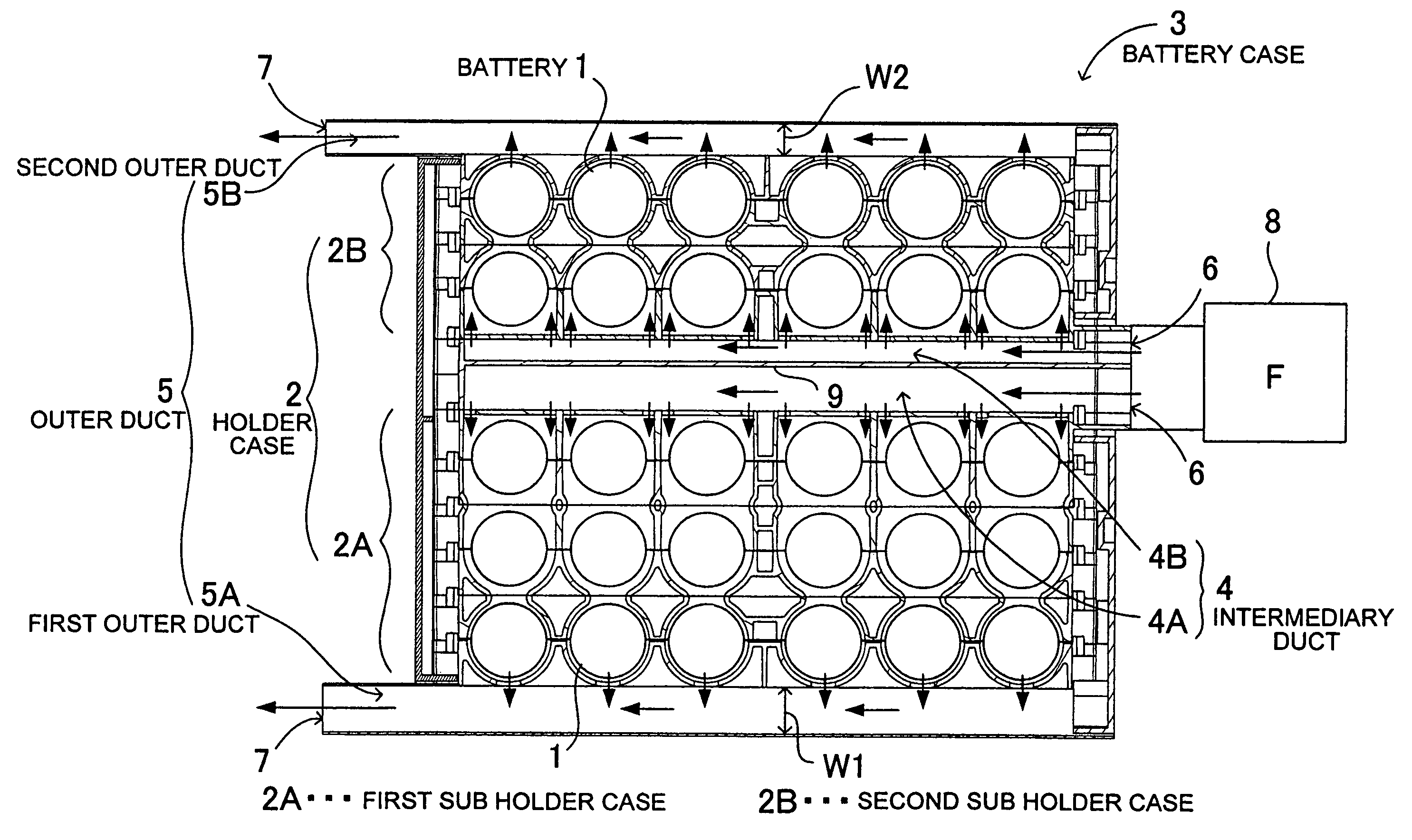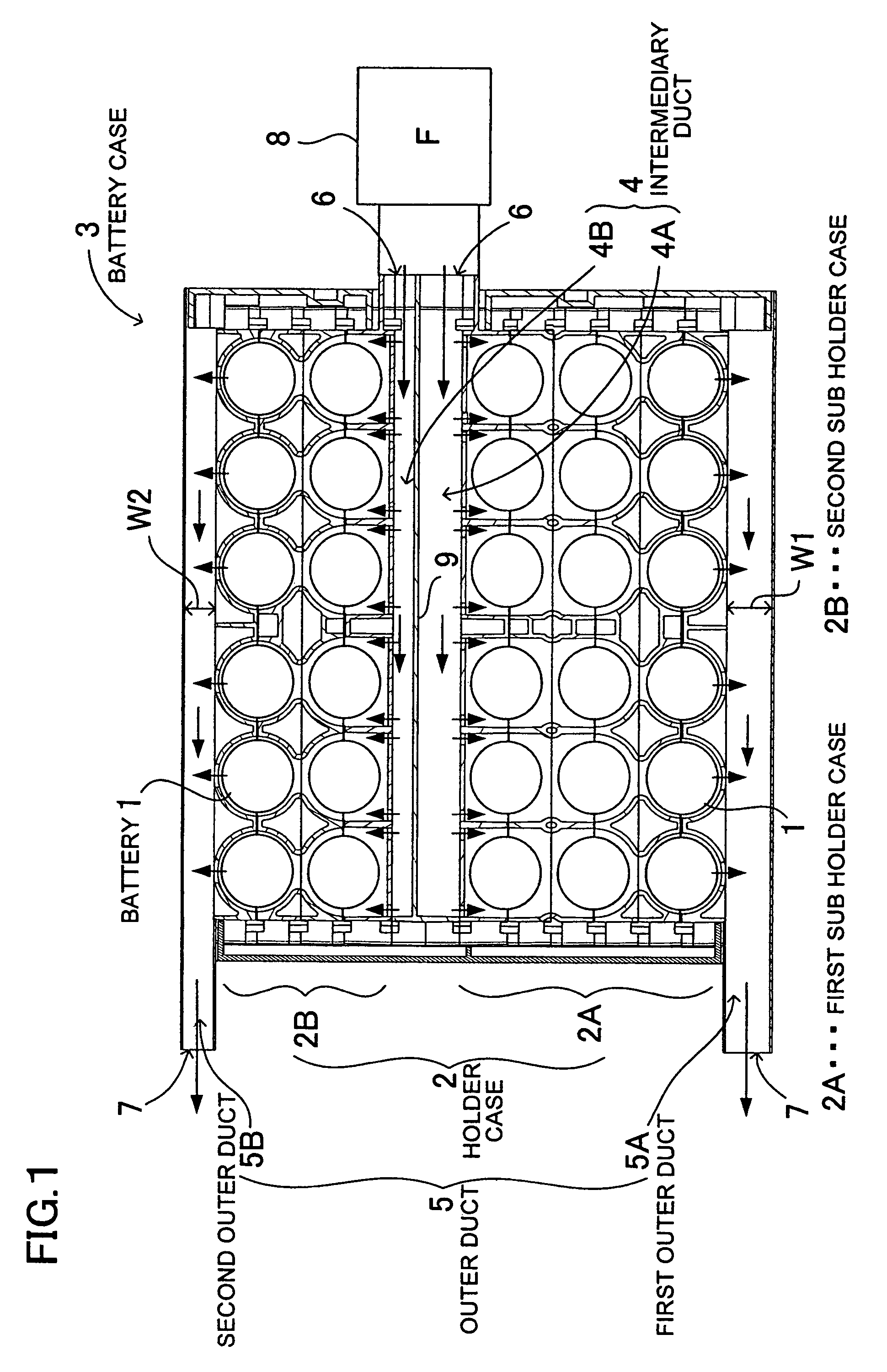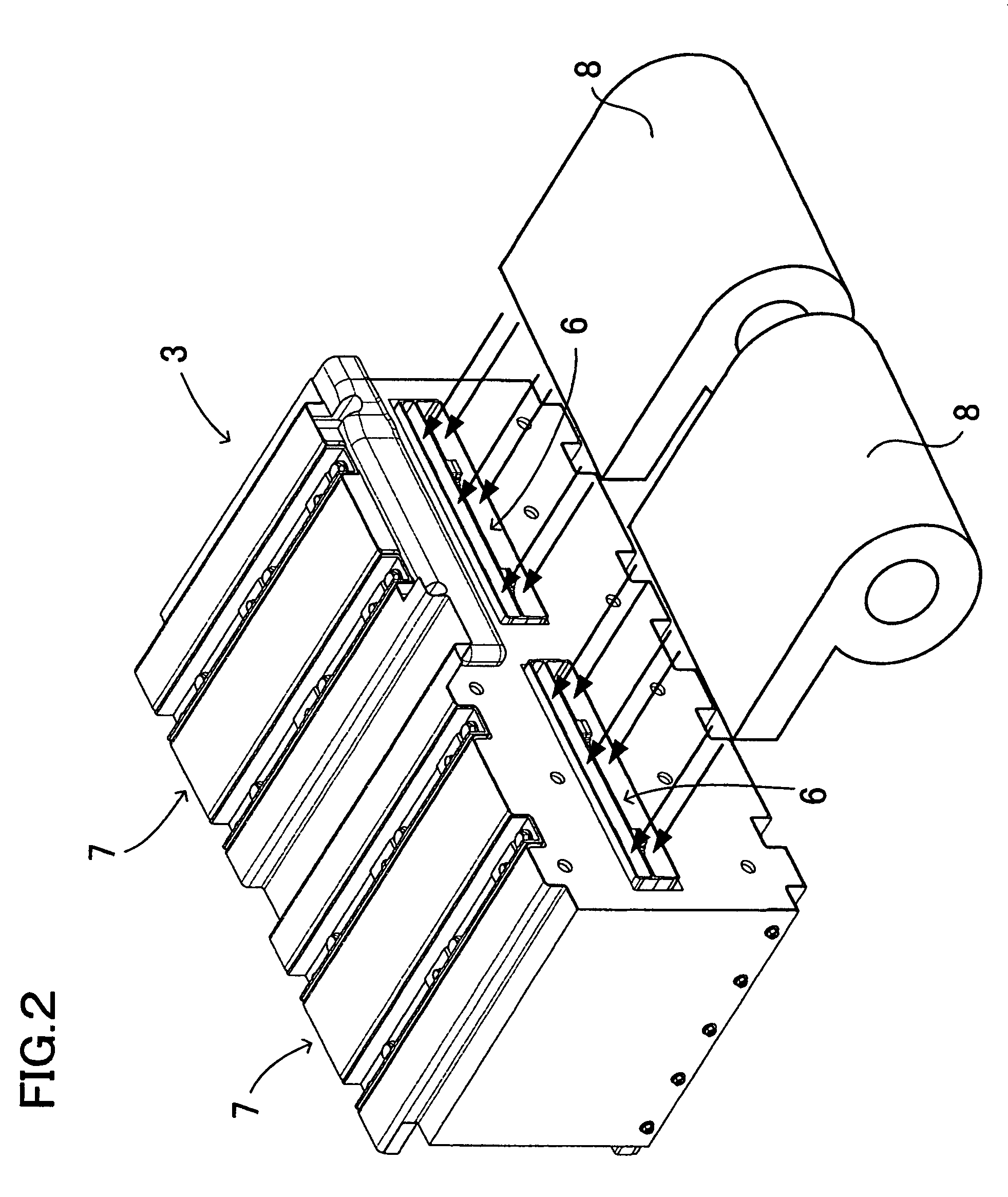Electric power source
a technology of electric power source and battery module, which is applied in the field of electric power source, can solve the problems of generating a higher temperature, difficult or impossible to uniformly cool all battery modules, and reducing performance efficiency, so as to reduce temperature difference, reduce pressure loss, and increase temperature difference
- Summary
- Abstract
- Description
- Claims
- Application Information
AI Technical Summary
Benefits of technology
Problems solved by technology
Method used
Image
Examples
Embodiment Construction
)
[0031]The electric power source, shown in the cross-sectional view in FIG. 1 and the perspective view in FIG. 2, contains a plurality of batteries 1 stacked in five tiers within the battery case 3. Although the illustrated power source contains the batteries 1 in five tiers, the inventive power source may contain batteries in seven or more tiers as well. The battery case 3 is divided into a first sub holder case 2A and a second sub holder case 2B midway of the direction of stacking the batteries 1, namely, midway between upper and lower stages as viewed in the Figure. In the illustrated battery case 3, the first sub holder case 2A is disposed in the lower stage and the second sub holder case 2B is disposed in the upper stage. Being thus divided, the first sub holder case 2A contains the batteries 1 in the greater number of tiers than does the second sub holder case 2B. In the illustrated battery case 3, the batteries 1 are contained in three tiers within the first sub holder case 2...
PUM
| Property | Measurement | Unit |
|---|---|---|
| electric power | aaaaa | aaaaa |
| pressure loss | aaaaa | aaaaa |
| width | aaaaa | aaaaa |
Abstract
Description
Claims
Application Information
 Login to View More
Login to View More - R&D
- Intellectual Property
- Life Sciences
- Materials
- Tech Scout
- Unparalleled Data Quality
- Higher Quality Content
- 60% Fewer Hallucinations
Browse by: Latest US Patents, China's latest patents, Technical Efficacy Thesaurus, Application Domain, Technology Topic, Popular Technical Reports.
© 2025 PatSnap. All rights reserved.Legal|Privacy policy|Modern Slavery Act Transparency Statement|Sitemap|About US| Contact US: help@patsnap.com



